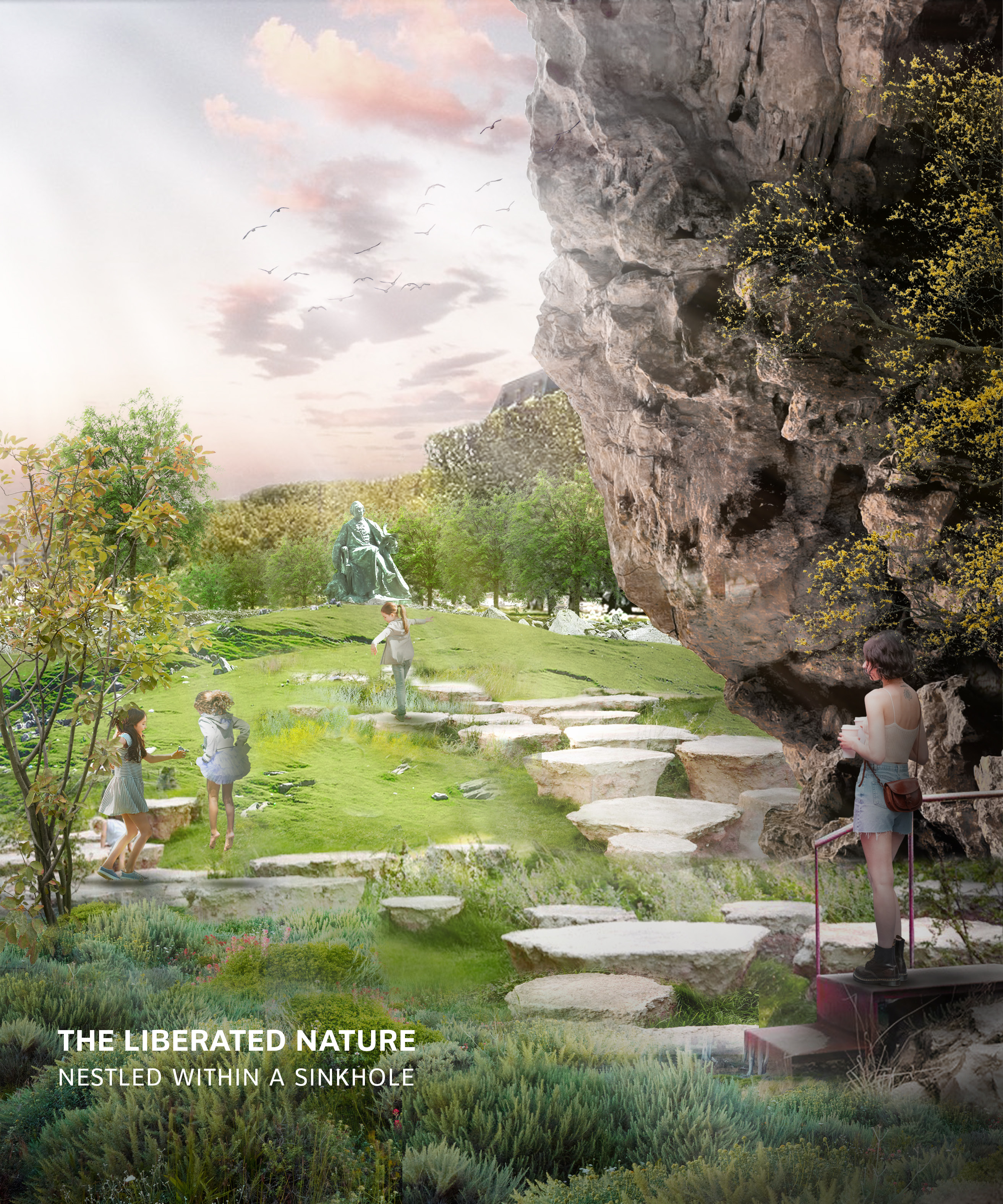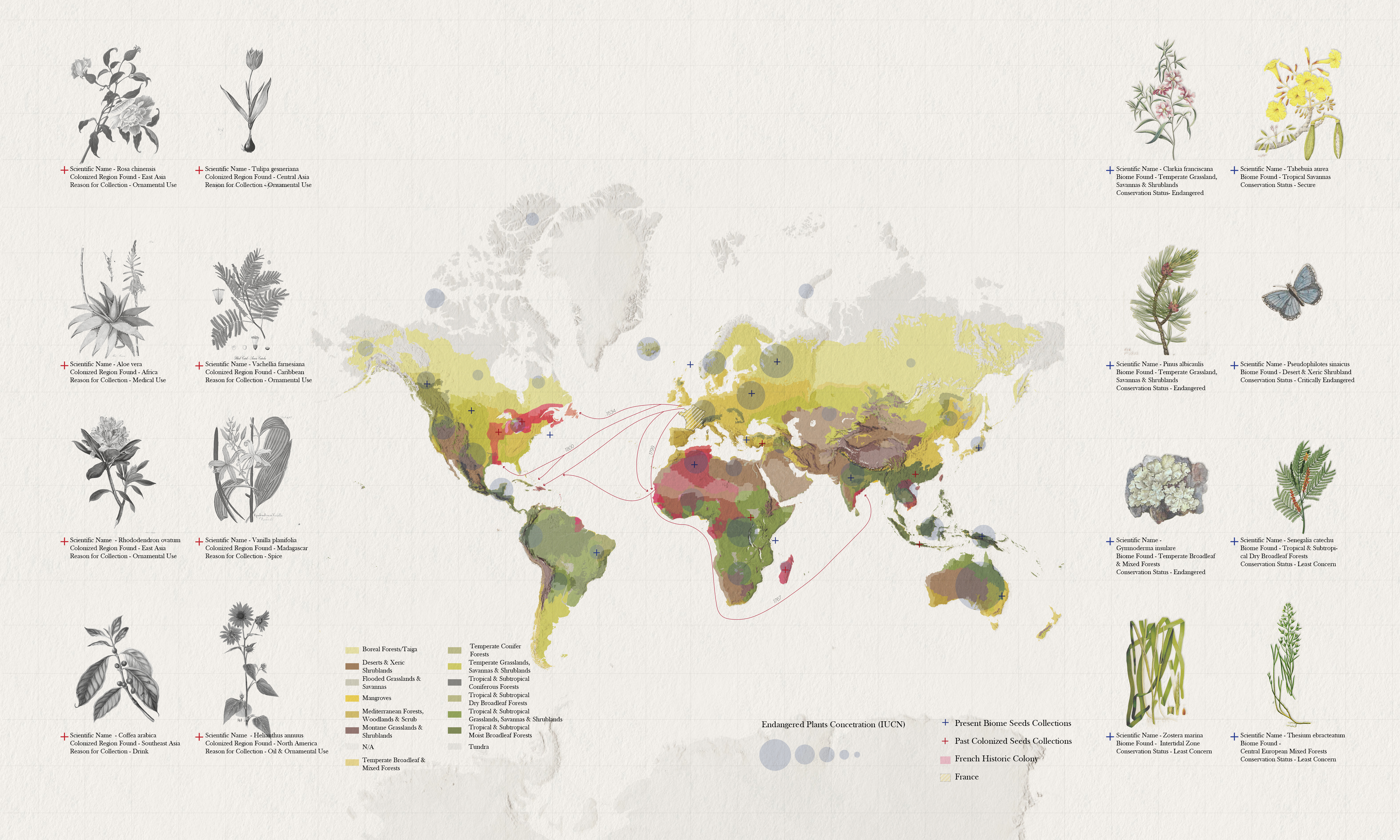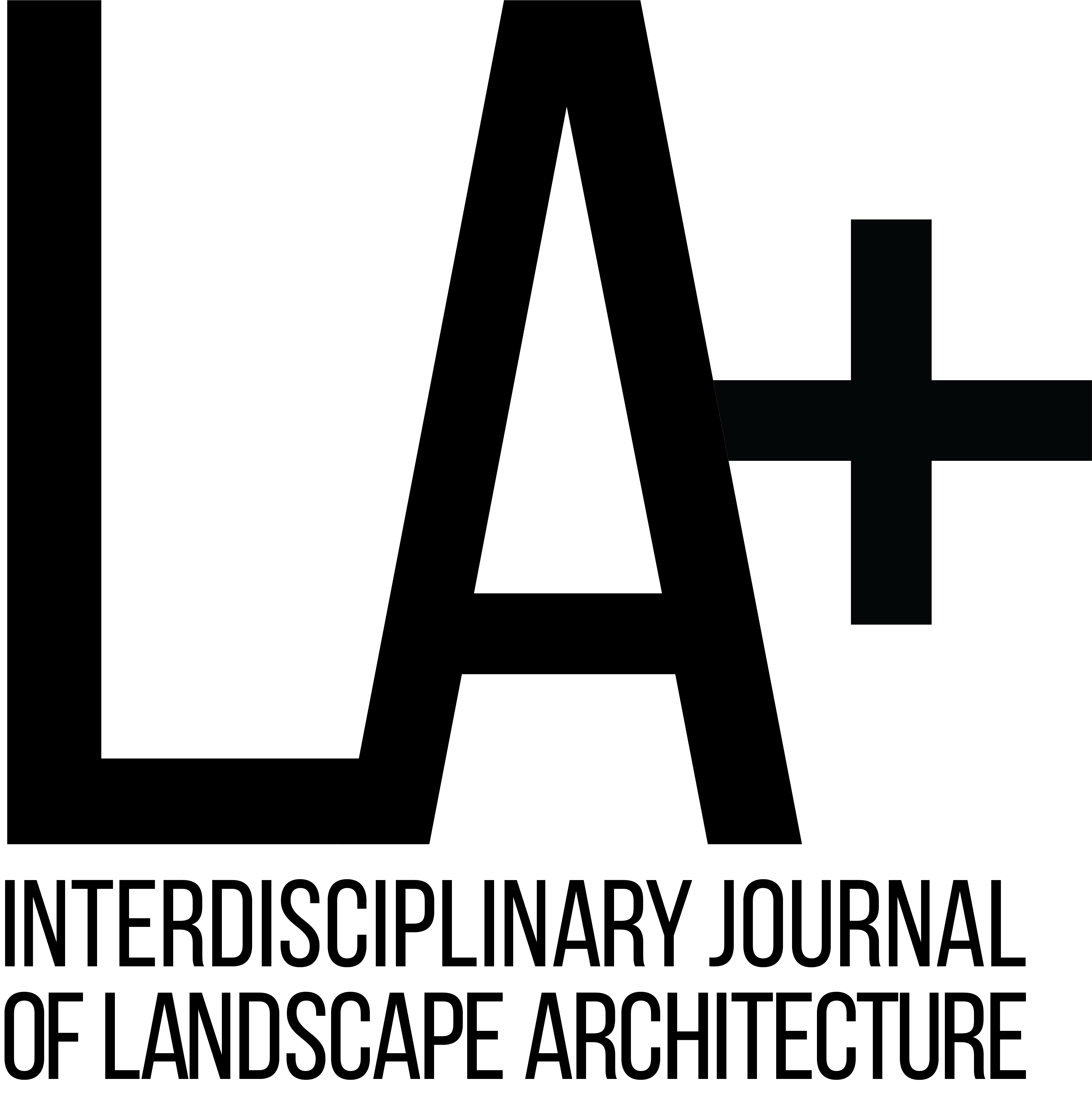
WINNING DESIGNS
The following designs from China, France, and United States were awarded first ($2,500), second ($2,500), third ($2,500), and (tied) fourth ($1,250) prizes respectively by LA+ EXOTIQUE’s eminent interdisciplinary jury. All awarded entries receive feature publication in LA+ Journal’s forthcoming LA+ EXOTIQUE issue (Spring 2024).
FIRST PRIZE
PEIXUAN WU + LIWEI SHEN + JINGYAN WANG (CHINA)
Liberated Nature nestled within a Sinkhole


As a traditional botanic garden, the Museum of Natural History forecourt embodies a disciplined view of nature. Rooted in a Western colonial mindset, its design is composed of relocated flora from across the world. While celebrated for its historical significance, the botanic garden treats nature as a curated display of royal authority and human dominion, ignoring local geology and environmental shifts. Liberated Nature aims to upend this tradition. In stark contrast to the confined, rigid boundaries of the past, the new design allows native vegetation to flourish freely, creating a vibrant, self-sustaining ecosystem. The proposed design intends to educate the public about local climate and geological history to support a more localized, contextualized view of the museum grounds. Lowering the ground level and taking advantage of site features—including areas of known former quarries—creates a moister and cooler microclimate that approximates the region's historical climate. This serves both as a nod to the native ecosystems that were once in this area, and as a pioneering effort to address the potential geological calamity of sinkholes in the limestone geology of Paris, a city built on “air” due to the extensive former quarrying operations. As Paris gets drier and hotter, the cooler microclimate of this sunken garden offers a sanctuary for the public and provides a flexible approach to extreme weather by accommodating changes in water levels from rainfall. The Museum's forecourt will evolve from a colonial-era relic to a dynamic educational space. Where human influence once reigned, the power of nature and evolution now takes center stage.
SECOND PRIZE
YINING ZHANG + LING ZHANG + YUEHUI GONG (CHINA)
Seeds’ Ark


The Jardin des Plantes de Paris is home to numerous exotic species brought back from various voyages, including places like Senegal, Madagascar, India, North America, and Brazil. Only species with medicinal or economic value were collected and reproduced in the garden, helping establish French colonial power and the order of nature. With decolonization and the rise of globalism, what was historically considered exotic hardly exists anymore. Seeds’ Ark reimagines exoticism as diverse and nature-centric, challenging colonial ideologies by creating an underground seed vault library that preserves plants from all biomes, emphasizing places with high concentrations of endangered species. Unlike a seed vault that functions as a secure facility for “backing up” agriculturally significant plants, the redesign of the Museum forecourt is organized to allow living plants—“escapees” from those planted in the vault below—to germinate. In plan, the geometry follows the historic grid form; in section, glass openings in the ground allow ample sunlight to the underground vault, which includes gallery spaces that invite visitors to experience the progression of a living species from lab, to seed wall, to plant, to above-ground exterior spaces, where the plants grow vertically out of the bounds of the vault. With the help of angular landforms, the seeds from the plants that poke above the forecourt can germinate through wind, eventually sowing a ground condition that is a more fertile and biodiverse representation of the planet’s future.
THIRD PRIZE
MICHELLE CHAN SYL YENG (HONG KONG SAR) + LILLIAN CHUNG KWAN YU (HONG KONG SAR)
+ KAI ZHAO ZI CHENG (CHINA)
Gardens of Anthropogenic Wonders


The perception of exoticism is in constant flux based on power dynamics and market trends. The thirst for unique experiences, products, and aesthetics often fuels exoticism. Discarded remnants, a byproduct of our consumer-centric culture, have left a lasting impact on our ecosystems, giving rise to a new form of exoticism marked by nature's adaptability, such as the troubling discovery of “plastiglomerate” in Hawaii. Setting up an experimental ground for exoticism in the Anthropocene, this scheme employs a series of walls composed of algae tiles. Daily waste is collected, classified, and processed to feed into “bio-incubator” panels. Over time and under the influence of sunlight, these tiles gradually break down various remnants and release solutions into the ponds, nurturing the formation of a novel micro-ecosystem. As visitors venture through these algae-laden walls, they step into the dynamic realm of this micro-ecosystem, marked by a spectrum of green hues reflecting the diverse stages of algae development. It is a captivating journey that underscores the intricate interplay between human waste, nature's resilience, and the evolution of life in our modern era. Foregrounding global issues instead of specificity and uniqueness, the plaza is reinvented as a symbol for the Anthropocene: a new world blooms from the obsolete, forming a common ground to remind us of our collective responsibilities regarding waste and to reflect upon our colonized relationship to our environment.
FOURTH PRIZE (TIE)
ISABEL YIDONG LI + OLIVER ZIYUAN ZHU (CHINA)
Crumbling Earth, Our Future as Exoticism


Exoticism can emerge from within. When we neglect the ground upon which we stand and live, and disregard the damage we inflict upon our planet, are we, the offspring of Mother Earth, the most peculiar creatures she has borne? Our actions are transforming the world into uncharted territory, where the familiar becomes strange, and once-habitable places become uninhabitable. The future of our earth can be alien to us. Amid the climate crisis and the ongoing sixth mass extinction, 2023 witnessed numerous Sahara sandstorms veiling Europe, reaching as far as Scandinavia. At the same time, southern Europe grapples with desertification due to prolonged droughts and water shortages. Reflecting on these events, our project envisions an expressive desolate landscape that serves as a memorial to extinct species. The project seeks to transport visitors into a grim future, where the lush greenery of Jardin des Plantes turns into a barren terrain. Given the current environmental trajectory, this proposition is an increasingly plausible reality. Crumbling Earth serves as a jarring reminder of the consequences of our actions. At the heart of this landscape, the ground fractures into deep pathways, revealing the names of species driven to extinction by human activities. Visitors wander through the terrain, contemplating these extinctions as if unearthing paleontological remains. The pathway also creates a new grand entrance to the Muséum National d'Histoire Naturelle, granting direct access to the Grande Galerie de l'Évolution. On top of the fractured ground, multiple stainless-steel surfaces generate dazzling visual effects meant to evoke deep emotional resonance. As this journey concludes, visitors are reunited with the beloved scenery of Jardin des Plantes and are reminded that the world can remain a place we love if we commence our efforts now.
FOURTH PRIZE (TIE)
ADRIEN ROUSSEAU (FRANCE)
The Stone Nests


In the heart of bustling Paris, this bold and poetic aerial work combines the artifice of the city with the majesty of nature. Made of multiple concrete columns assembled within a light metal structure resembling a scaffolding, the “stone nests” evoke the curious yet familiar shapes of stalactites and stalagmites, termite mounds, or even tree bark, seemingly stepping out of a Jules Verne novel. Created on-site using a 3D printer, the sinuous mineral columns at times rise skyward as well as plunge into the ground. They evoke the ancient art of rockwork, which brought the picturesque and exotic to 19th-century Parisian parks and gardens. The columns are designed to welcome and observe birds. Each one features a unique combination of colors and textures. Carefully carved-out holes are integrated, providing birds with safe places to nest and raise their young. The cavities vary in configuration and size to accommodate the widest possible range of species. Located within the main square of the Museum of Natural History, this open aviary would become the new visual landmark along the axis of the Jardin des Plantes. The stone nests evolve with the habitat they support, inviting visitors to look up and marvel. This sanctuary for our winged friends is a reminder that the meanders of concrete can be designed to meet the demands of living things. Every morning, the garden awakens to the chirping of birds, a music that, thanks to these avian columns, has regained its place in the city’s frenetic rhythm.












